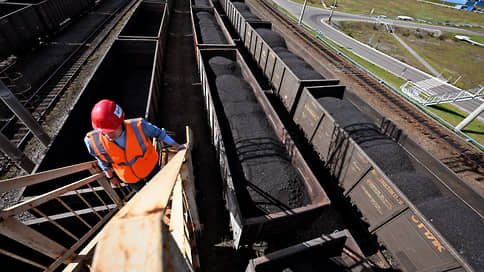The freight base of the BAM and Trans-Siberian Railways is stated to be 40–60% higher than the long-term plans for the development of highways
[ad_1]

As Kommersant found out, the cargo base of the BAM and Trans-Siberian Railways is stated at a level that exceeds by 40–60% the long-term plans for the development of highways. This is mainly export coal, shippers’ export plans for which exceed future infrastructure capabilities by 170–200 million tons. In some regions, coal exports were re-announced six times more than possible. According to analysts, for now these applications are only a demonstration that no matter how much capacity is introduced in the eastern direction, they will all be loaded. Real planning depends on the use of alternative destinations and the international situation.
Even if the BAM and Trans-Siberian Railways are expanded to the maximum parameters that are currently envisaged – up to 255 million tons of carrying capacity by 2035 – there will not be enough for everyone who wants it, it follows from the indicative forecast of the cargo base of the Eastern range, prepared, according to Kommersant’s information, by the Ministry of Transport and JSC Russian Railways.
According to the document, following the implementation of expansion measures to 210 million tons – this is the so-called stage 3.2 of the modernization of the Eastern site, which is planned to be completed by 2031 – loading will be possible in the amount of 332.6 million tons. However, the declared demand is 61.5% higher than this volume, amounting to 537.2 million tons. The picture is identical if expanded to 255 million tons by 2035: transportation capacity will be 384.5 million tons, and declared demand will be 552.5 million tons.
The eastern testing site is being expanded in three stages. The first one has already been completed, and according to the plan, the second one will also be completed in 2024 (up to 180 million tons). The third has not yet been approved, but it is planned that it will be implemented in three substages: first with an expansion to 197 million tons for cargo from the Elga field, then to 210 million tons, where a significant part of the work will be aimed at exporting cargo from the European part of the Russian Federation. The third substage involves the construction of four large artificial structures – three tunnels and a bridge worth about 520 billion rubles – either under a concession scheme or using the EPCF mechanism (see Kommersant on September 12). The entire third stage is estimated at 2 trillion rubles. and is scheduled for completion in 2032.
The total volume of additional demand is generated by coal transportation, mainly (96.3% in 2031 and 97% in 2035) export. The remaining loads are placed within the limit.
The Kemerovo region plans to ship the largest amount of coal, as it does today: 136.6 million tons in 2031 and 138.6 million tons in 2035, consistently exceeding transportation capacity by 70 million and 67.2 million tons, respectively. In second place in terms of declared volume is Khakassia with 66.4 million and 68.9 million tons, of which practically nothing will fit in 2031 (14.6%) and a little more – 30% – in 2035. In third place is the Amur region with applications of 47.1 million tons for both periods and exceeding capacity by 20–35%. At the same time, the share of the capacity of the Eastern landfill, allocated according to the plan for coal transportation, does not increase compared to today: 57% in 2031 and 60% in 2035, whereas today, as explained to Kommersant by Russian Railways, it is 57. 3% (and 70% in export shipments).
The Ministry of Transport did not give any comments, JSC Russian Railways noted that, in accordance with the instructions of the government, they continue to study the long-term development of the infrastructure of the BAM and Trans-Siberian Railways and have now formed preliminary parameters for the third stage, providing for an increase in the carrying capacity of the Eastern range to 210 million tons by the end of 2030, as well as long-term development of the landfill’s carrying capacity to 255 million tons by the end of 2032.
According to the head of Infoline-Analytics, Mikhail Burmistrov, this document should not be considered in the context of planning cargo flows in the coal industry, but rather as a signal that whatever Russian Railways builds in the eastern direction will be loaded. For Kuzbass, there is an alternative to the Eastern training ground in the form of ports in the south and north-west, he notes. Taman, due to bottlenecks in the Russian Railways network, is now at one-third capacity, while when supplying coal to Turkey and North Africa it is more cost-effective than the ports of the Far East, and comparable to India when delivering in Capesize bulk carriers.
The ports of the north-west also have ample resources and, importantly, there are no bottlenecks in the railway network. So far, it looks like this, the expert notes, as if all coal miners have declared all additional and even part of the existing volumes that go through other ports exclusively to the Eastern site. He adds that there is some chance that relations with European countries could improve by 2030, allowing supply routes to diversify. He also does not rule out that the experience of the Pacific Railway, which Elsie independently built in record time to export its coal, will be repeated by someone.
[ad_2]
Source link





